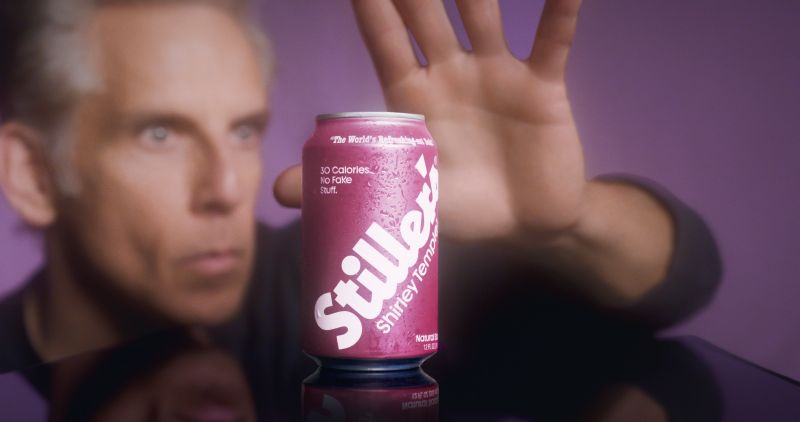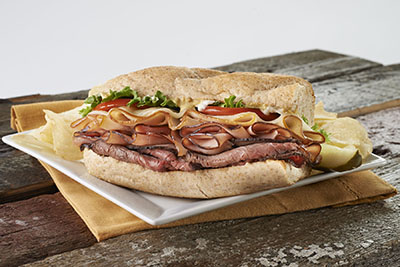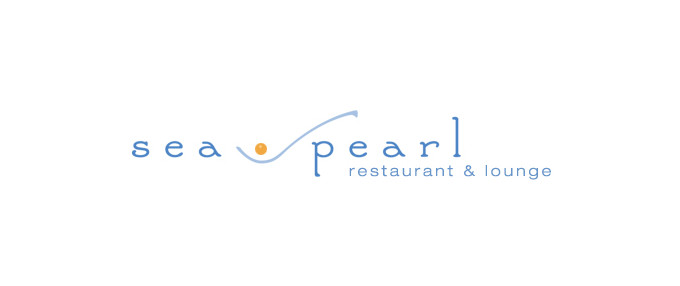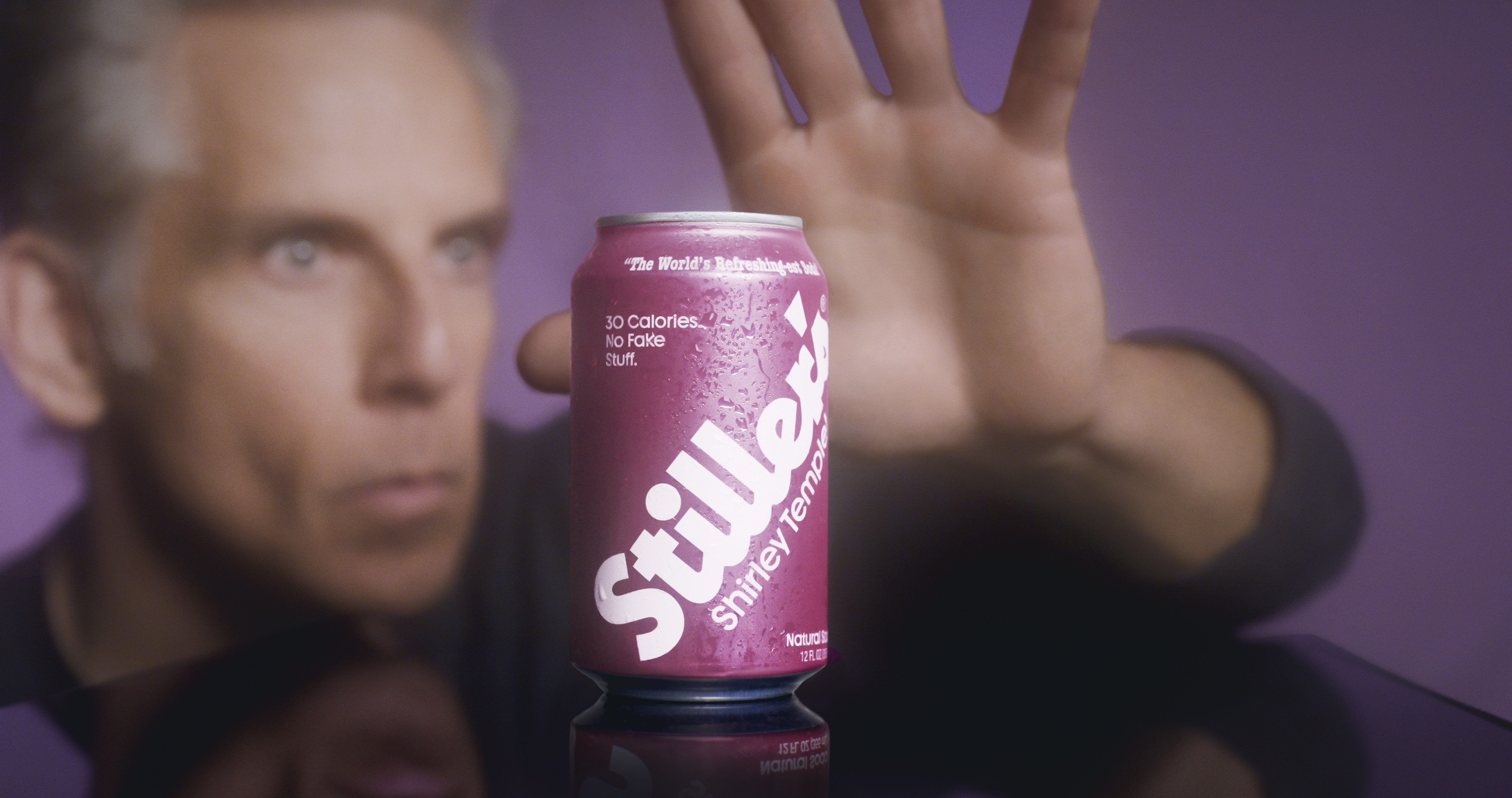
Hollywood heavyweight Ben Stiller is trading his director’s chair for an entrepreneur’s cap, launching Stiller’s Soda in his hometown of New York City. But this isn’t just another celebrity beverage play: it’s a strategic entry into the rapidly evolving better-for-you soda market that’s reshaping the entire food and beverage industry.
With traditional soda sales declining and functional beverages exploding, Stiller’s Soda represents a fascinating middle ground: delivering nostalgic, classic soda taste while meeting modern health-conscious demands. For food and beverage professionals, this launch offers valuable insights into consumer trends, brand positioning, and the ongoing transformation of the beverage landscape.
The Product Innovation: Bridging Classic and Contemporary
Stiller’s Soda enters the market with a clear value proposition: all-natural ingredients, just 30 calories per can, and only 7 grams of sugar. Unlike the crowded prebiotic and probiotic beverage space dominated by brands like Olipop and Poppi, Stiller’s focuses purely on delivering great taste without the functional health claims.
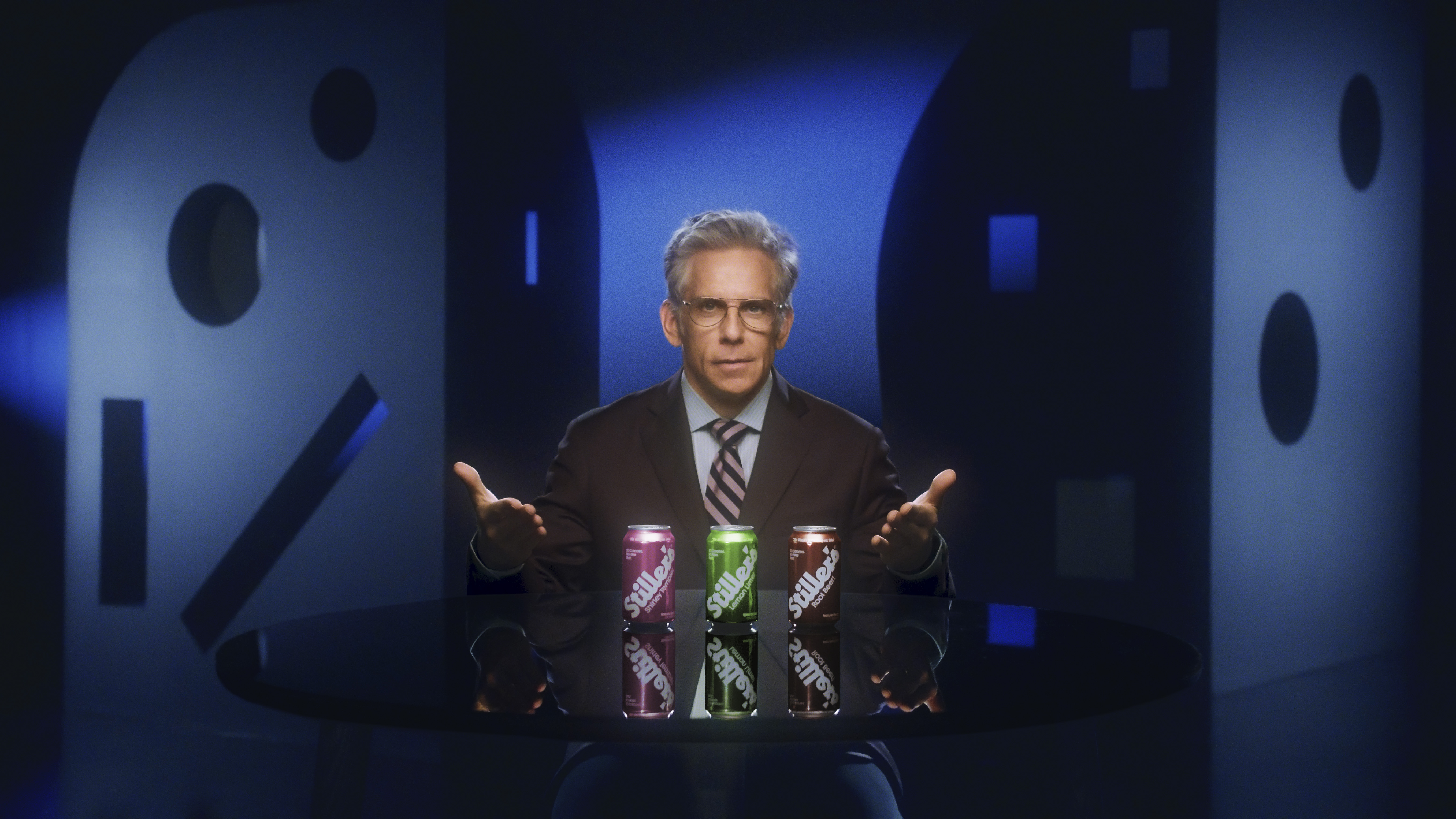
The debut collection features three carefully chosen flavors rooted in Americana nostalgia:
- Root Beer – A classic that never goes out of style
- Lemon Lime – The refreshing staple of soda fountains
- Shirley Temple – Stiller’s personal favorite and the brand’s signature offering
Each can is fortified with essential vitamins including B12, C, and D, positioning the product as a guilt-free indulgence rather than a functional health drink. This approach directly addresses what food and beverage industry analysts have identified as “premiumization fatigue”: consumer exhaustion with overly complex health claims.
Market Positioning: Classic Soda for a New World
Stiller’s brand philosophy centers on a simple yet powerful concept: “classic soda for a new world.” This positioning strategically avoids competing directly with established players in the functional beverage space while carving out new territory in the nostalgia-driven premium soda category.
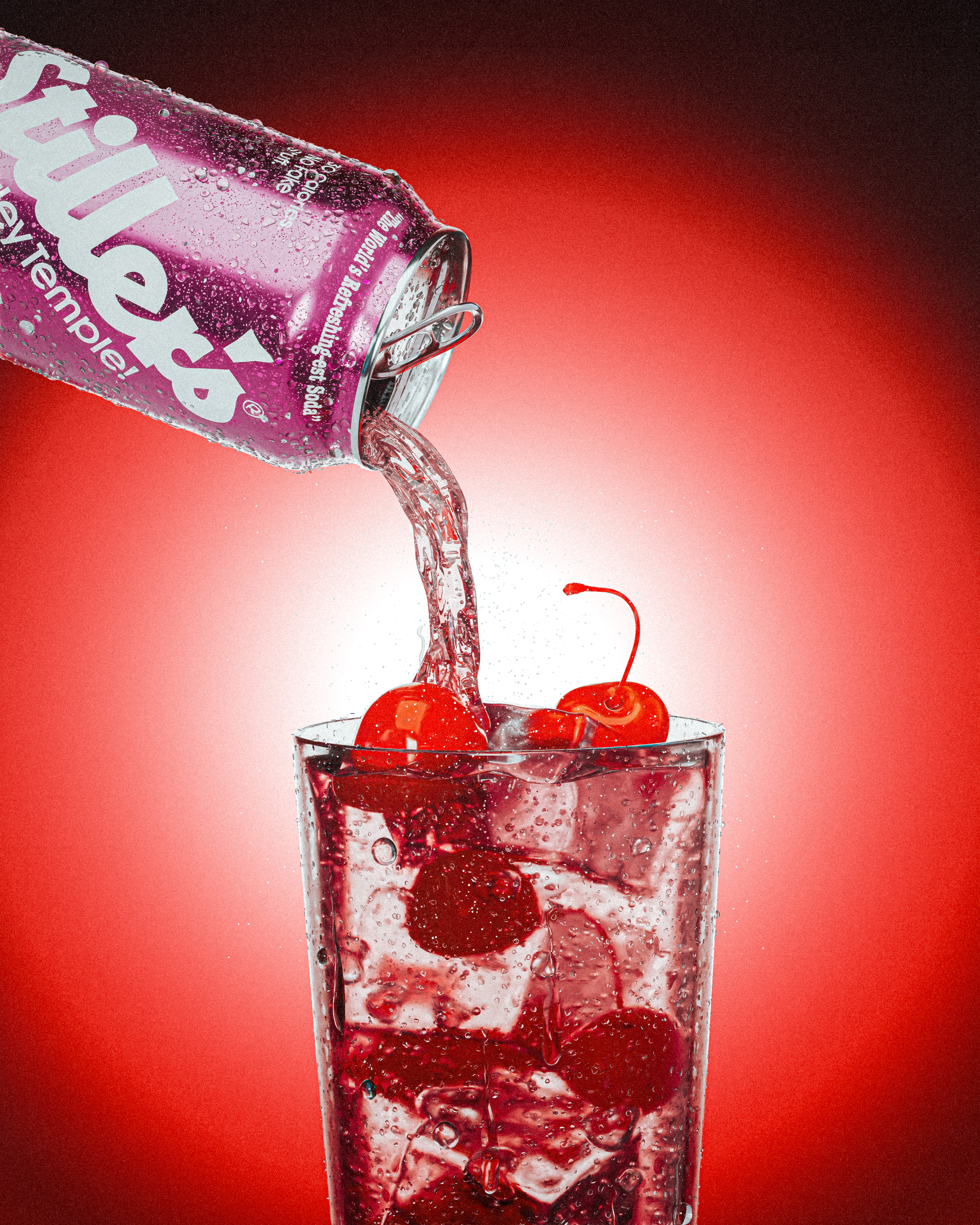
“My love of soda goes way back, and for me it began with Shirley Temples,” Stiller explains. “The idea behind Stiller’s Soda was simple: bring back that same sense of nostalgia but make it work for today.” This emotional connection to childhood memories represents a powerful marketing strategy that resonates across generational lines: from Gen X adults who share Stiller’s nostalgia to Gen Alpha consumers discovering these classic flavors for the first time.
The brand’s approach reflects broader food and beverage trends toward authenticity and simplicity, moving away from artificial ingredients while maintaining the sensory experience consumers crave.
Celebrity Brand Strategy: Authentic Partnership Over Pure Endorsement
The collaboration between Stiller and food and beverage entrepreneur Alex Doman represents a sophisticated approach to celebrity branding. Rather than a typical endorsement deal, this partnership brings together entertainment credibility with beverage industry expertise.
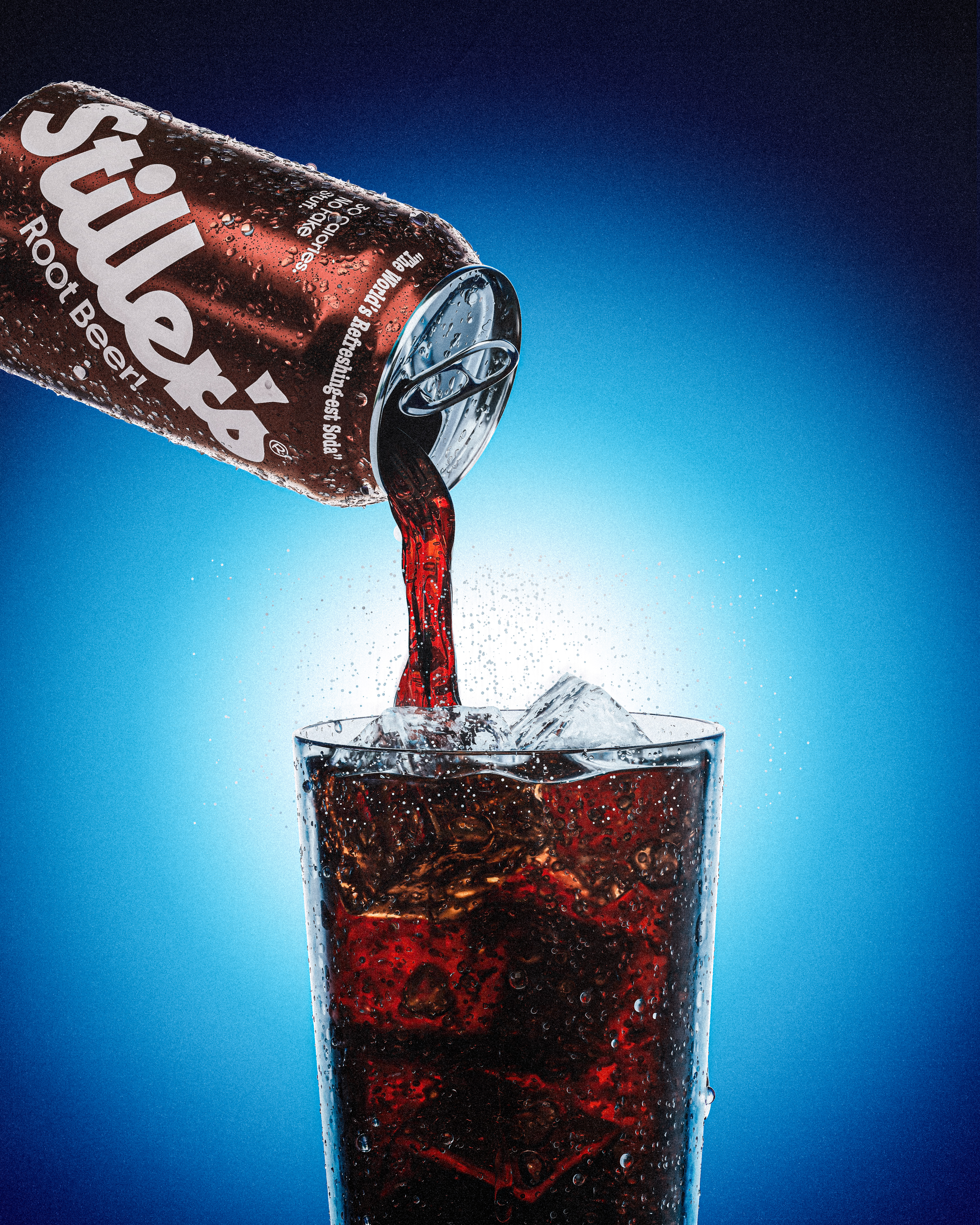
Justin Theroux’s involvement as both advisor and campaign creative partner adds another layer of authenticity. “It was an easy yes when he approached me with this idea,” Theroux notes. “Stiller is on a mission to bring soda back to its roots while modernizing it for everyone.”
The marketing campaign deliberately parodies over-the-top 1980s advertisements, with Stiller pitching the soda alongside Theroux’s whisper-voice narration. This self-aware approach acknowledges the crowded celebrity brand landscape while differentiating through humor and genuine product passion.
For food and beverage companies considering celebrity partnerships, Stiller’s model demonstrates the importance of authentic alignment between spokesperson and product, moving beyond simple brand ambassadorships toward genuine co-creation.
Distribution Strategy: Testing Before Scaling
Stiller’s Soda launches exclusively in New York City and nationwide via Amazon’s U.S. store, with plans for Walmart.com integration followed by broader retail expansion in 2026. This measured rollout reflects sophisticated food and beverage management principles, allowing for real-world testing and refinement before major capital commitments.
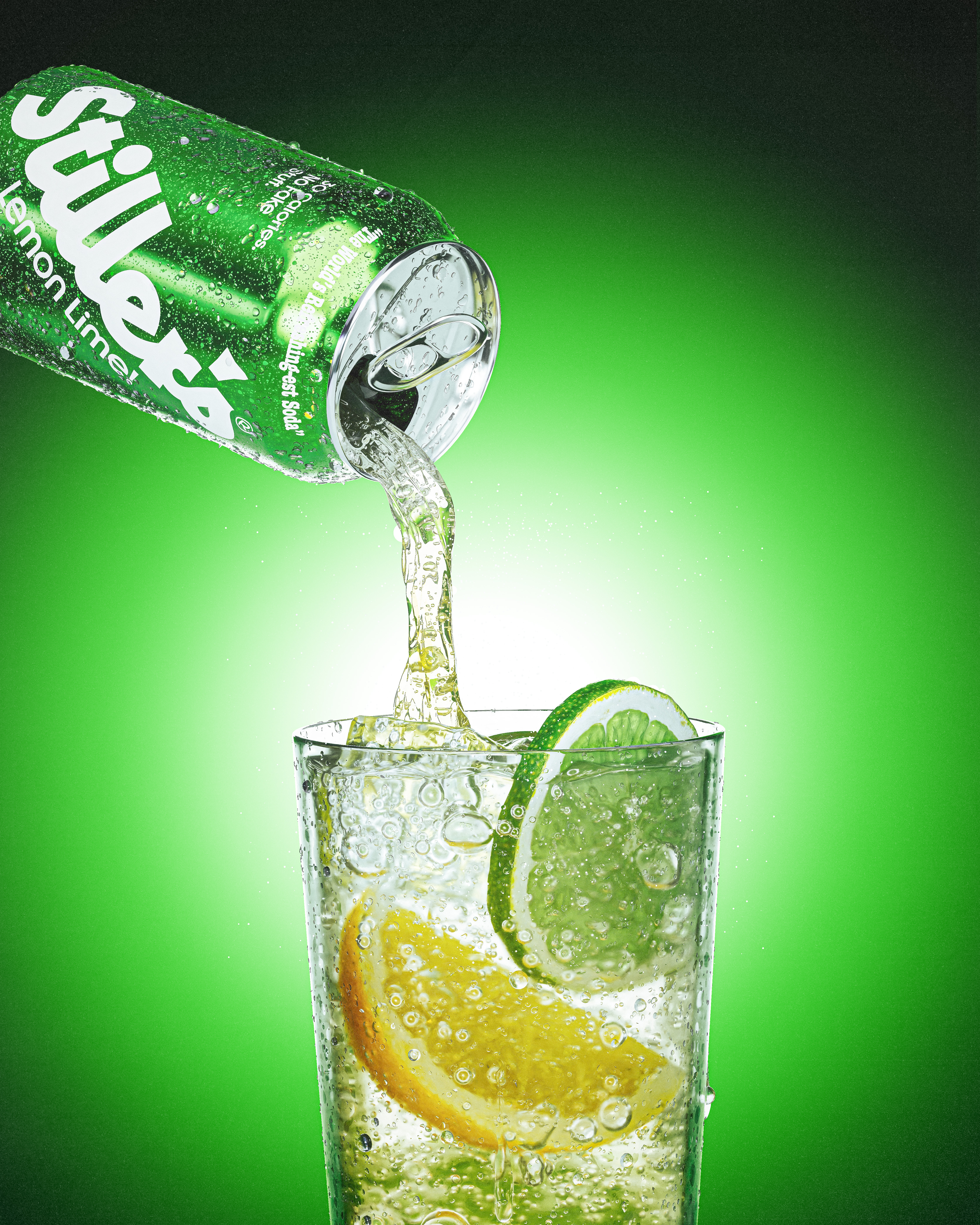
The NYC focus provides several strategic advantages:
- Premium market testing in a sophisticated consumer environment
- Media accessibility for publicity and sampling opportunities
- Supply chain optimization before national distribution
- Brand refinement based on real consumer feedback
For foodservice professionals, this approach offers lessons in market entry strategy, particularly for premium beverage categories where brand perception and positioning are critical.
Industry Implications: The Better-For-You Evolution
Stiller’s Soda enters a beverage market undergoing fundamental transformation. Traditional soda consumption continues declining, with Americans drinking approximately 38 gallons of soda annually compared to 54 gallons at peak consumption in the 1990s. Simultaneously, the functional beverage market is projected to reach $279.4 billion by 2030.
The brand’s positioning suggests recognition of several key industry dynamics:
Consumer Fatigue with Complexity: While functional beverages continue growing, some consumers are seeking simpler “better-for-you” options without extensive health claims.
Nostalgia Marketing Power: Brands leveraging authentic nostalgia connections are outperforming purely innovation-focused competitors across food and beverage categories.
Premium Without Pretension: Success in the premium beverage space increasingly requires approachable luxury rather than exclusivity.
What Food & Beverage Professionals Can Learn
Several strategic insights emerge from Stiller’s Soda’s market entry:
Brand Authenticity Matters: The connection between Stiller’s personal soda love and the brand story creates genuine emotional resonance that traditional marketing struggles to achieve.
Market Gap Analysis: Rather than competing directly in crowded categories, successful brands identify underserved consumer needs: in this case, great-tasting reduced-sugar soda without functional complexity.
Gradual Scale Strategy: The phased rollout approach allows for optimization while building sustainable demand rather than forcing rapid expansion.
Cross-Industry Expertise: The partnership between entertainment and beverage industry professionals demonstrates the value of combining different skill sets and perspectives.

The Future of Premium Soda
Stiller’s Soda represents broader industry trends toward premiumization, authenticity, and health-conscious reformulation. For restaurant operators and beverage directors, products like this offer opportunities to:
- Enhance beverage programs with unique, conversation-starting options
- Appeal to health-conscious consumers without sacrificing taste expectations
- Leverage nostalgia marketing in menu descriptions and promotional materials
- Test premium pricing strategies for better-for-you alternatives
As the food and beverage industry continues evolving toward more conscious consumption, brands that successfully balance indulgence with health benefits are positioned for sustained growth.
Looking Ahead: Market Expansion and Industry Impact
With expansion plans including Walmart.com and nationwide retail distribution, Stiller’s Soda could influence broader industry dynamics. Success could encourage other celebrity entrepreneurs to enter the beverage space while validating the market demand for premium, nostalgic sodas.
For food and beverage professionals, monitoring this launch provides insights into consumer preferences, distribution strategies, and the ongoing evolution of the better-for-you beverage category. Whether Stiller’s Soda achieves sustained market success or remains a niche player, its approach offers valuable lessons in brand building, market positioning, and authentic celebrity partnerships.
The beverage industry’s future increasingly belongs to brands that can deliver both emotional connection and functional benefits: exactly what Stiller’s Soda aims to achieve. For an industry built on refreshment and enjoyment, sometimes the best innovation is making classic experiences better rather than completely reimagining them.
Visit stillerssoda.com and follow @stillerssoda on social media platforms for the latest updates on availability and flavors.
Written by Michael Politz, Author of Guide to Restaurant Success: The Proven Process for Starting Any Restaurant Business From Scratch to Success (ISBN: 978-1-119-66896-1), Founder of Food & Beverage Magazine, the leading online magazine and resource in the industry. Designer of the Bluetooth logo and recognized in Entrepreneur Magazine’s “Top 40 Under 40” for founding American Wholesale Floral. Politz is also the founder of the Proof Awards and the CPG Awards and a partner in numerous consumer brands across the food and beverage sector.



